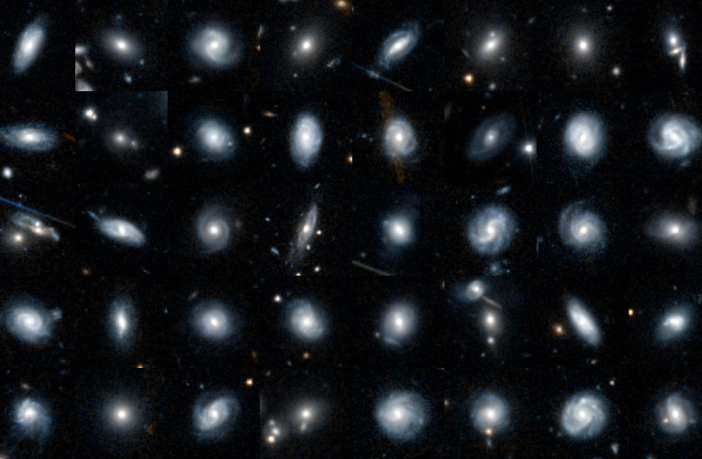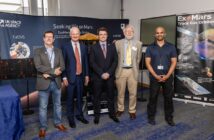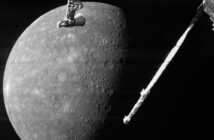Thanks to a new Galaxy Zoo project launched today, the public can help identify the shapes of thousands of galaxies in images taken by ESA’s Euclid space telescope. These classifications will help scientists answer questions about how the shapes of galaxies have changed over time, and what caused these changes and why.
In its mission to map out the Universe, Euclid will image hundreds of thousands of distant galaxies. In November 2023 and May 2024, the world got its first glimpse at the quality of Euclid’s images, which included a variety of sources, from nearby nebulas to distant clusters of galaxies. In the background of each of these images are hundreds of thousands of distant galaxies.
This is a joint project between science working groups of the Euclid Consortium and the Galaxy Zoo team. On both teams, academics from The Open University (OU) are closely involved with the exciting research.
Dr Hugh Dickinson, Lecturer in Astronomy at the OU, said:
“This is a really exciting time for any astrophysicist who studies distant galaxies! The Euclid Survey will be truly revolutionary for our understanding of how these enormous collections of stars form, evolve and interact. Euclid will capture images of hundreds of millions of galaxies with unprecedented spatial resolution.
“With the help of Galaxy Zoo volunteers, we will be able to examine the complex and beautiful shapes and structures that those images reveal, which will tell us more than ever before about the astrophysical processes that govern the lives of galaxies in our Universe.”
For the next six years, the spacecraft is expected to send around 100 GB of data back to Earth every day. That’s a lot of data and labelling that through human effort alone is incredibly difficult.
That’s why ESA and Euclid consortium scientists have partnered with Galaxy Zoo, a citizen science project on the Zooniverse platform, where members of the public can help classify the shapes of galaxies.
Euclid will release its first catalogues of data to the scientific community starting in 2025, but in the meantime any volunteer on the Galaxy Zoo project can have a glimpse at previously unseen images from the telescope.
You could be the first person to lay eyes on a galaxy
The first set of data, which contains tens of thousands of galaxies selected from more than 800 000 images, has been made available on the platform, and is waiting for you to help classify them.
If you partake in the project, you could be the first to lay eyes on Euclid’s latest images. Not only that, you could also be the first human ever to see the galaxy in the image.
The Galaxy Zoo project was first launched in 2007, and asked members of the public to help classify the shapes of a million galaxies from images taken by the Sloan Digital Sky Survey. In the past 17 years, Galaxy Zoo has remained operational, with more than 400 000 people classifying the shapes of galaxies from other projects and telescopes, including the the NASA/ESA Hubble Space Telescope and the NASA/ESA/CSA James Webb Space Telescope.
Jürgen Popp, post-graduate researcher at the OU and member of the Euclid team, added:
“It’s great to see that we’ve got the chance to involve the Galaxy Zoo volunteers in helping us to classify the shapes of the first set of galaxy images from the Euclid main survey. I am always stunned by their enthusiasm and engagement.
“We can learn so much about how galaxies evolve from their visual appearance and classifications, especially if Euclid is providing us with so many more details for every single galaxy. I am pretty sure this will also lead to some unexpected discoveries.”
Humans and AI working together
These classifications are not only useful for their immediate scientific potential, but also as a training set for Artificial Intelligence (AI) algorithms. Without being taught what to look for by humans, AI algorithms struggle to classify galaxies. But together, humans and AI can accurately classify limitless numbers of galaxies.
At Zooniverse, the team has developed an AI algorithm called ZooBot, which will sift through the Euclid images first and label the ‘easier ones’ of which a lot of examples already exist in previous galaxy surveys. When ZooBot is not confident on the classification of a galaxy, perhaps due to complex or faint structures, it will show it to users on Galaxy Zoo to get their human classifications, which will then help ZooBot to learn more.
On the platform, volunteers will be presented with images of galaxies and will then be asked several questions, such as “Is the galaxy round?”, or “Are there signs of spiral arms?”.
After being trained on these human classifications, ZooBot will be integrated in the Euclid catalogues to provide detailed classifications for hundreds of millions of galaxies, making it the largest scientific catalogue to date, and enabling groundbreaking new science.
Stephen Serjeant, Professor of Astronomy, commented:
“Humans can mine data in ways that are impossible for even the most advanced AI. The Euclid space telescope is scanning a third of the whole sky to Hubble-like quality, and it’s perfect for humans to explore. Euclid’s images are goldmine where human volunteers are the best at finding some of the rare treasures.”



